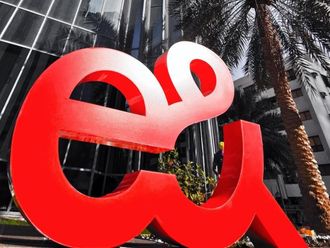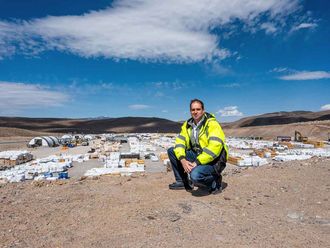Dubai: When all the TV vendors are focusing on the buzzword 3D, Japanese firm Sharp Electronics is focusing on a different technology and redefining the way we see liquid crystal displays (LCD).
Normally, there are three primary colour filters — red, green and blue — which bring billions of colour pixels on screen.
Sharp's new proprietary Quattron quad pixel technology, is adding a fourth colour — yellow — for the first time to the TV industry.
This technology combined with 10-generation panel enables the LCD display to reproduce 1.3 trillion colours that have been difficult or impossible to portray using conventional LCD displays at the same time reducing power consumption.
Doubled shares
"We expect to double our market share this year from five per cent last year and 30 per cent growth in sales in Middle East and Africa with this new technology," Fred Yamaguchi, managing director, Sharp MEA, told Gulf News after launching three new Aquos models.
He said we have already launched it in US and Europe and the demand is strong. We expect the new technology to give a solid boost to the company's sales.
The price will be slightly higher than the conventional LCDs and will be competitive at the same time too.
The company expects to retail the LED-backlight 40, 46, 52 inches models in July and expects to launch eight more models by August.
"Like every other TV manufacturer launching 3D TV technology, Sharp will launch 3D TVs based on the Quattron quad pixel technology in the region soon," he said
According to Riddhi Patel, principal analyst at iSuppli's TV division, the region expects to sell 5.4 million LCDs this year compared to 3.56 million last year. The revenues are expected to rise to around $117 billion compared to $94.3 billion last year.
The company's revenues in MEA stood at $2.5 billion last year and expect to achieve $5 billion in 2012, when the Japanese firm will be celebrating its centennial anniversary in 2012.
"We expect to become a complete eco-positive company by 2012 with the start-up of Green Front Sakai factory complex in Japan.
We can achieve it in two ways - first by creating energy by ourselves through solar panels. Right now we have 25 per cent of the actual installations around the globe and second by saving energy products.
"We are implementing eco-initiatives that aim to contribute to environmental preservation while bringing a new age to electronics," Yamaguchi said.
The largest panel size of 108-inch was produced by Sharp at its Green Front Sakai plant and was displayed at last Gitex.
The factory produces around 36,000 panels of 40-60-inch panels per month and he said the production capacity is expected to increase to 72,000 panels per month.
"This year we will focus more the less recession-affected countries like Iran, Egypt, Saudi Arabia, Levant, South Africa and Egypt," Yamaguchi said.









